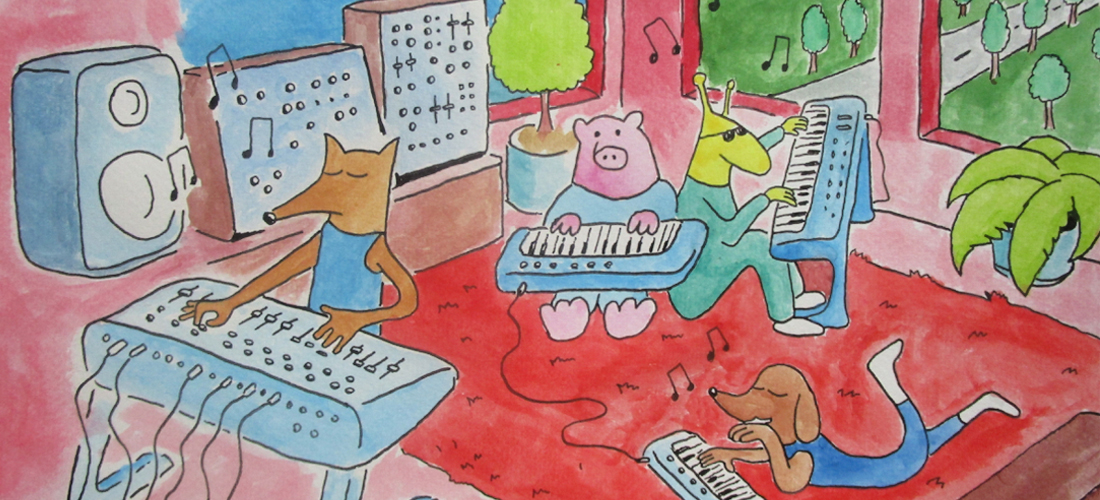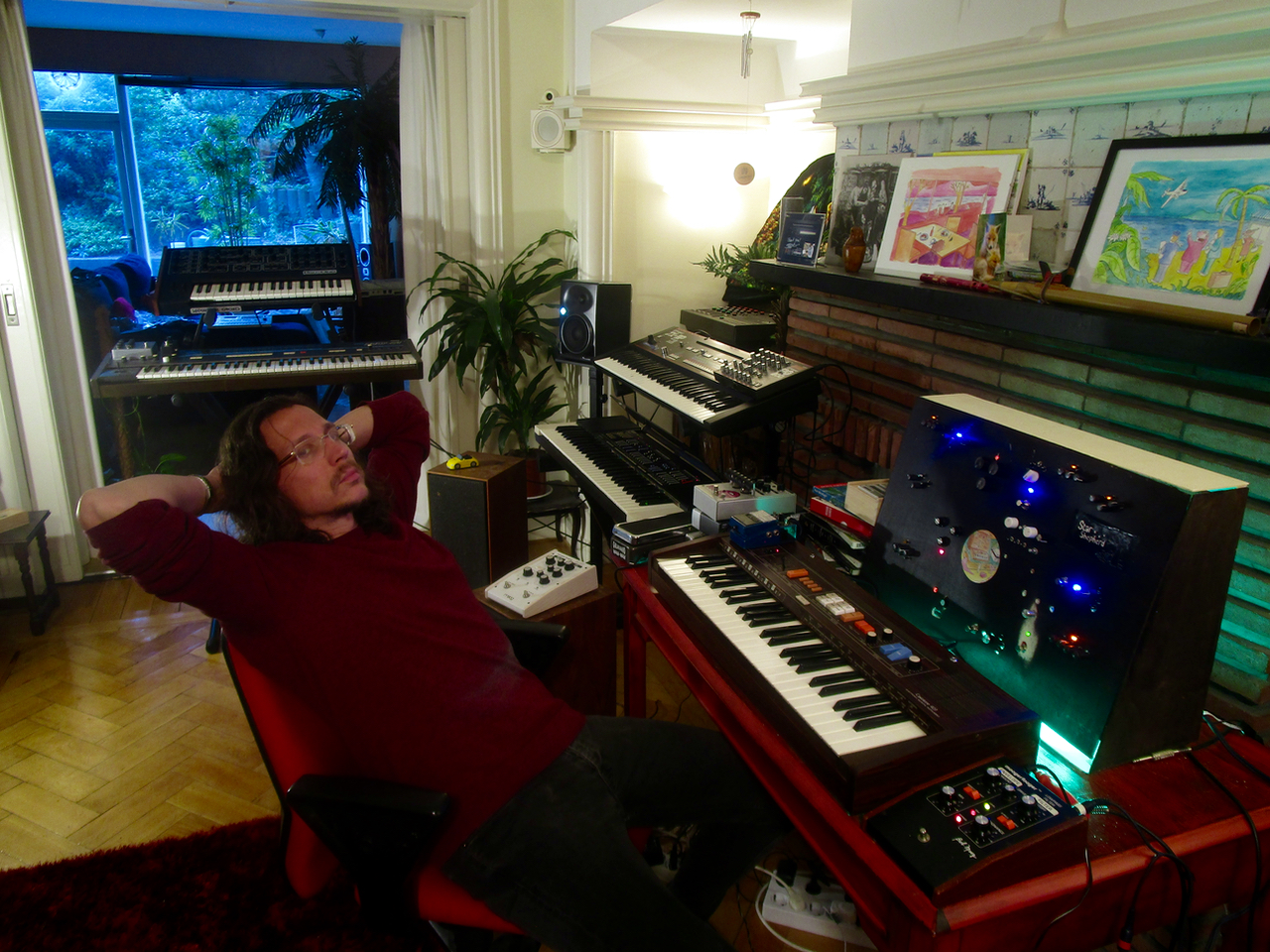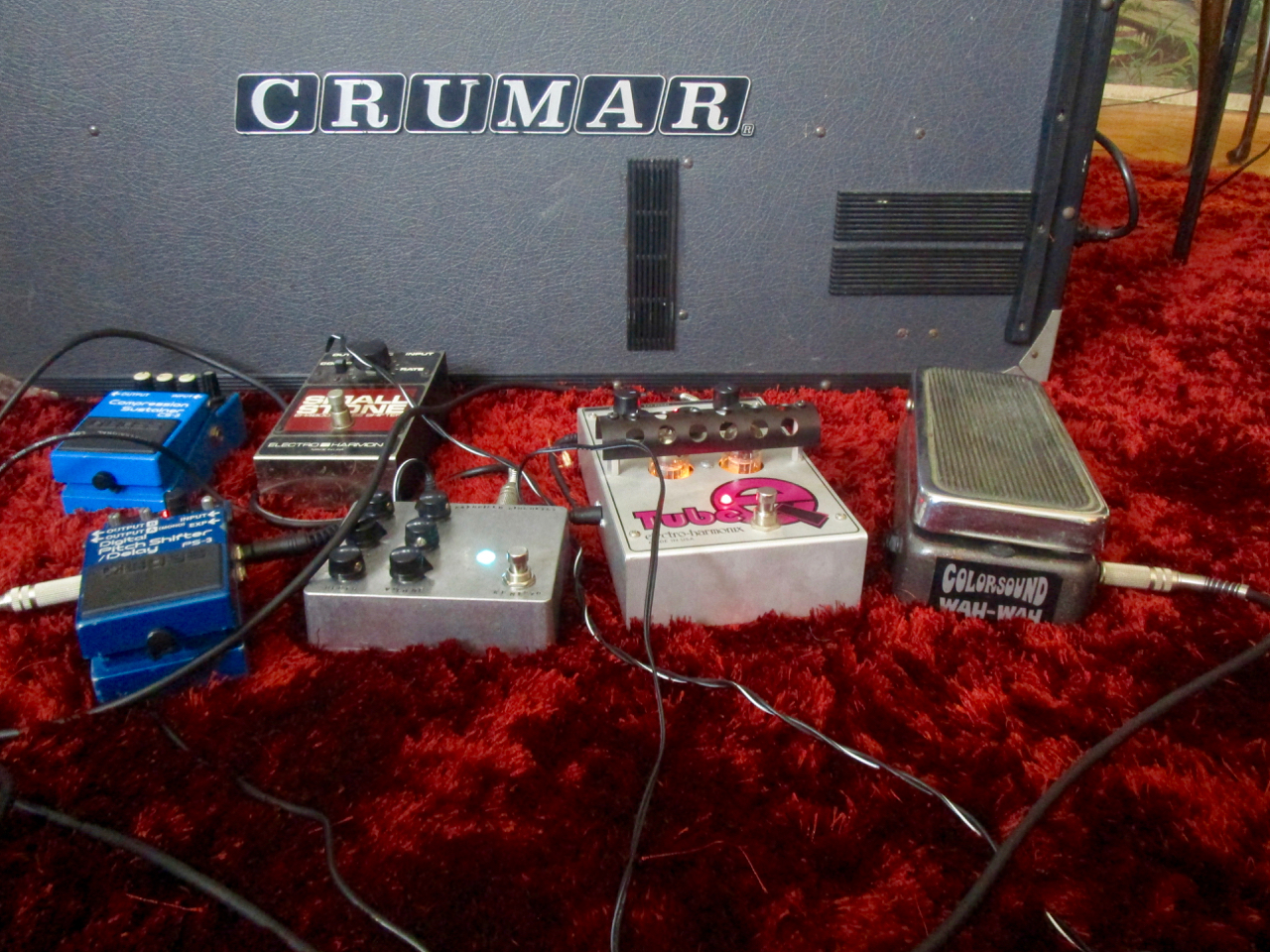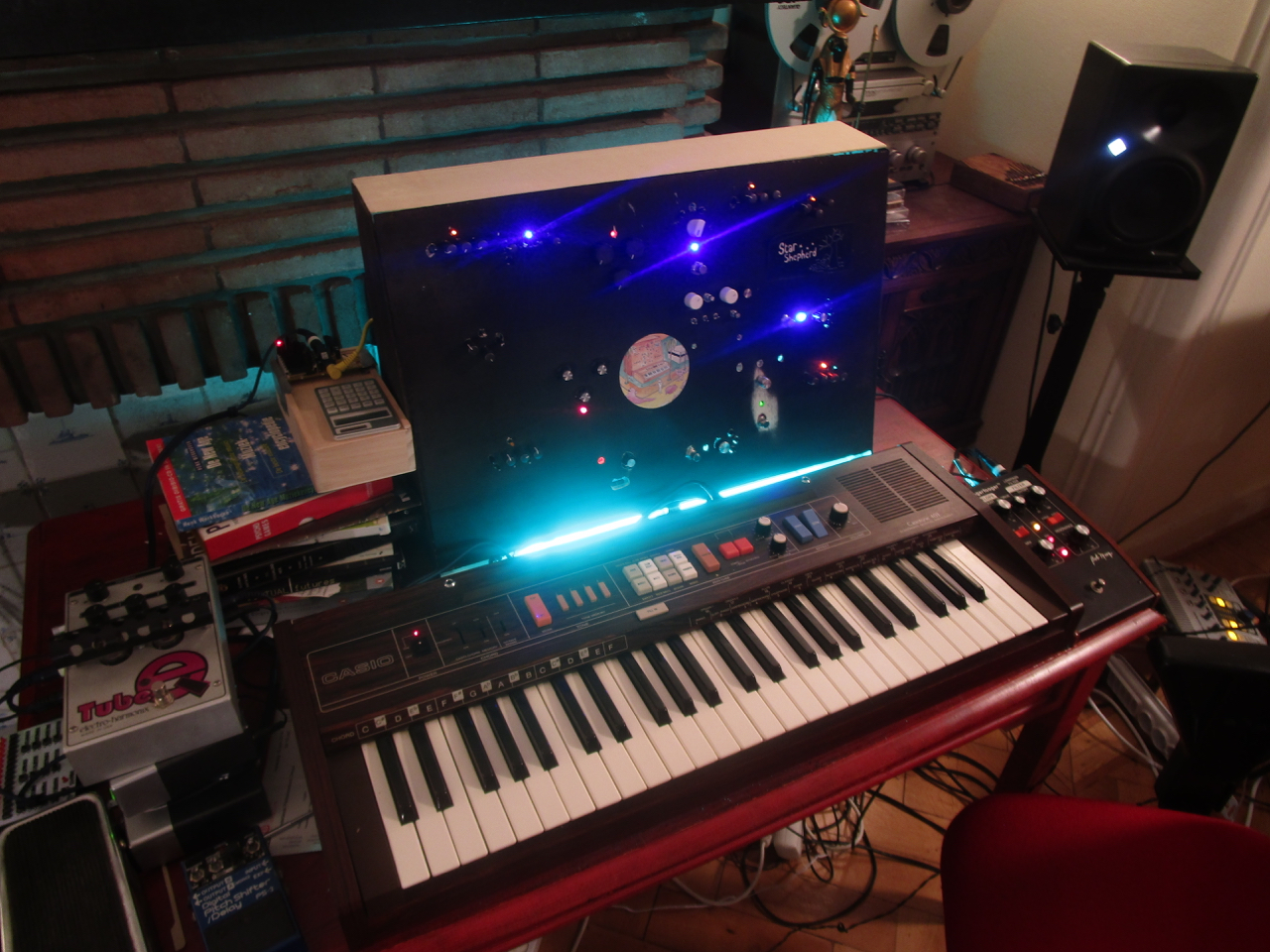Artist Tips: Legowelt
Production secrets from Danny Wolfers.

Artist Tips: Legowelt
Production secrets from Danny Wolfers.
Danny Wolfers boasts more aliases than many producers do releases. His vast musical output also spans various different genres—ranging from dense and foresty techno to whizzing electro, deeper electronic, and stuff for which there isn’t even a name yet—all the while remaining captivating without ever conforming to the usual trends. It’s an exceedingly rich and varied body of sonic material.
Wolfers emerged in the early ’90s and after hearing Unit Moebius on the radio. This interest sparked his now long-standing associations with the Dutch West Coast scene and Bunker family, where he began working alongside musical mentors such as I-f and Melvin White. His Pimpshifter, a six-track debut album, arrived on Bunker in 1998—and he’s since returned with a slew of other Legowelt releases on the Dutch imprint; while he’s shared other material—as Catnip (with Luke Eargoggle), The Chicago Shags (with Orgue Electronique), Gladio, Smackos, Smackulator (with Speculator), Squadra Blanco, Salamandos, Raheem Hershel, Venom 18, among others—via the likes of Clone, L.I.E.S., and Dekmantel.
Naturally, Wolfers has also kick-started his own label, Nightwind Records—a convenient, modern day home for his musical experimentation. Founded in 2014, the label has since amassed a healthy discography, all coming from Wolfers himself, most recently a cassette version of the Loch Ness video game soundtrack originally released in 2012 on the Legowelt website. Each release comes with one of Wolfers’ animated artworks, like the one he’s drawn above to accompany this feature.
A foundation for this work is Wolfers’ unfaltering devotion to hardware—old and new. You don’t have to look too hard for video tours of his studio, and Wolfers is hardly reluctant to support other like-minded artists. His personal site hosts a wealth of sample packs, plug-ins, and information. In line we this, we asked Wolfers to delve a little bit deeper to discuss some of the key, lesser-known tips behind his work, and this is what he submitted.
These are just some random tips. Everyone works differently so they might not be of any use for you but for some they might open some new creative doors. Speaking generally, be dauntless—ignore the true complexities of what you are doing. You don’t have to understand everything; don’t be intimidated by the vastness and complicated nature of the studio-sphere. Go with a gut feeling on all this!
Inspirational Psychological Brain Hack Tips :
Making music should not be a drudgery chore. It should be a fun intoxicating meditative experience that cultivates your being in many positive ways. But sometimes you run on empty and you don’t have any inspiration, so here are some small tips that might help.
Silent Record Player:
If you have difficulty finishing tracks, have a record player with a record playing without sound in your studio while you produce/mix down tracks. Somehow the visual cue of seeing a record running while working on your own music supports your creative flow; you trick your mind into thinking that your unfinished track is seen as a finished record in action. This might give you just the push you need to finish that track. I sometimes do this when I need to mix down or master an album and need some inducement. You probably can do it with a cassette tape too, but maybe not with a CD player.
Reversing the Keyboard:
If you are in a creative malaise behind a synth, try reversing the keyboard. Just flip it so you are facing the backside, it’s a bit more difficult to play but just try it, you might be surprised on how different and more exotic your melodies will begin to sound. I guess that’s because you kind of flipped your brain; your right hand will play the side the left hand normally plays and vice versa, making your mind inverted. I bet it works with a drum machine too.
Mix Music Production with Cooking:
Cook and make music at the same time—not in a multitasking way, but in between. Start with the normal introductory studio rituals: turn everything on, check if everything works, program some sounds, get into the zone—and after 10 or 20 minutes go to the kitchen and start cooking.
Cooking is fundamentally a creative process and will trigger lots of creative neurons and pathways in the brain that you can transpose to the studio process. Finish your cooking and put whatever you made in the fridge for later—or eat it while making music—and go back to the studio. Your brain will continue the creative flow it picked up from the cooking activity regardless of whether or not you are sitting behind your gear. For your brain, the synth is a frying pan. Your sounds are the ingredients, the effects of different spices etc. You might see how much easier it is to make music now! Of course, not everyone has their studio at home but maybe it works with a microwave too?
Now, let’s continue with some more in-depth technical tips…


In-Depth Technical Tips:
EQ as Part of the Synthesis Process:
See equalizers as part of the sound synthesis—away with the prudent conservative “If it’s not necessary don’t use the EQ’ attitude!” EQ shapes your sound like a sculptor shapes his or her material. Chip away or add frequencies to your liking and go into adventurous territories beyond just chipping, emphasizing sounds from a totally new angle.
Also, get old EQ boxes, Hi-fi graphic equalizers, guitar EQ pedals, weird dusty parametric filters, put graphical EQ VSTs on all your DAW tracks, use the mid-sweep EQ on your mixing board (more on that later). These are all options.
Here is an interesting EQ trick that works well on “harsh” sounding material that has too many irritating high and mid-high frequencies: first, use a lowpass filter with a pleasant slope to cut out the higher frequencies—not too muffled, just so it doesn’t sound harsh anymore. Then use a graphic or whatever EQ to boost the high frequencies again—the new boosted high-frequency range will only be a “softened” sketch of what once was, a ghostly but more pleasant sounding reminder of the once harsh high frequencies. This is perfect for creating a more lo-fi or fuzzy tape-like sound that is sympathetic to the listener’s brain.
Envision Your Mixer as an Instrument:
Even if you work in the box, it is nice to have an analog mixer—it doesn’t really matter what goes in there; multiple outputs of your VST’s or real synths, it’s all the same to me. They can be all mixed and shaped by your hands using the mixer in an exciting interactive way.
Steer well clear of digital hardware mixers. Nothing is more mind-numbingly boring than working on something like a Yamaha 01 or Behringer X32. It’s like being on acid in a sterile office photocopying room with locked doors. I would recommend a mixer with mid-sweep EQs as this will give you more interesting EQ possibilities to play with.
Learn from dub reggae—the pure foundation of more “out there” studio / electronic music where the mixer itself took centre stage. Envision and play the mixer as an instrument—go crazy with the FX auxiliaries, sweep the EQ, fade tracks in and out manually while recording/playing.
Also, don’t be shy about changing the effects-AUX knobs during the recording. Connect lots of delay/reverb/phasers/filters, and whatever effects to the AUXs and turn those AUX knobs on the channels on different sounds continuously while recording—adding emphasis on certain parts and creating a feeling of dimensional space.
Use the mixer channels’ mid-sweep EQ as a filter, keep sweeping it throughout the whole track when you are recording—you can do that very subtly and slowly, so that the listener barely notices it—but it will give a certain animated life and spatial depth to the track (Like in Smackos “A Vampire Goes West”) or you can go full out and create intense filter effects like in this legendary scene of a 1990s Dutch gabber documentary with Patrick van Kerckhoven.
Route the AUX-effect return audio back on a normal channel (not in the special dedicated AUX-return input—which most of the time doesn’t have EQ possibilities). Now you can EQ/filter the wet effects themselves, too. And feedback the channel by adding the same Aux effects for classic dub style feedback effects. But watch your ears (and speakers)!
Sample your Own Synths:
When you don’t feel inspired to make a track but just want to play around with your synths or create new sounds just do that—and record the sounds to make your own sample library for later use.
Press record on your DAW, Audacity, or whatever you use and start making sounds on your synth. Play one-shot notes, melodies, chords, pads, weird effects, freak out with the controls—record it all; there is no right or wrong, so just keep on recording. Once you’ve recorded a bunch of sounds, let’s say 20 minutes worth of it, stop the recording and save the file. Go through the recording and cut the sounds you like into individual samples—give them cool names and save them in a fresh folder. If you do this a few times you will have a great sample library with your own unique signature sample material.
Next time you make a track, open up a sampler in your DAW or turn on your hardware sampler and start loading them with your own samples. You might be pleasantly surprised by the fresh new inspiration this will give you.
A cool thing to do is to play “a melody with a sampled melody”: get a sample of where you play a melody, set the release of the sample a bit longer/higher, and play a new melody with that. You will get interesting dynamic polyrhythmic spaced out sounds—don’t worry about timing and shit like that because there is always a way you can make it sound good.
Another fun thing to do is to record the sounds first on cassette tape instead of a DAW and then record that tape into the computer. This procedure will add magnetic noise to the samples and creates rather charming artefacts when played in the sampler, especially at different keys/pitches.

Use Guitar Effect Pedals on Synthesizers:
Old guitar effect pedals are (often) cheap and fun additions to make synths and keyboards sound more interesting. Instruments you are bored with are given a second life just by attaching some pedals. So forage your local pawn shop or trade your rock guitar buddy a bag of crack for some pedals and there we go.
A Wah-wah pedal is a great exotic sounding filter. Put a Wah-wah pedal on strings and you have instant haunting, velvet, mind-piercing atmosphere reminding of classic Italian or Dutch string keyboards. Or put it over a monophonic portamento’d lead synth to get instant funky JB’s blow-your-head-type leads.
A Vibrato pedal is basically an extra LFO you can use to modulate the pitch of your synth sound—freeing up the synth’s internal LFO to modulate the filter, pitch, or VCA instead.
A Tremolo pedal that has a square-like wave and deep modulation can create interesting staccato arpeggio-like effects, which can time your synth to play to an exact “forced” rhythm, making it easier to play with your hands if you’re not good at that.
A Compressor pedal (like the Boss CS, for example) makes a drum machine sound like instant smacked-out Ron Hardy house.
A Pitch Shifter or Harmonizer pedal can change a boring one-oscillator synth or keyboard into a succulent machine of harmonic splendour. Make intervals or chords by setting the pitch shift at five or seven notes up or down and put the dry/wet mix halfway.
Combine guitar pedals to make even more exotic effects, the interaction between different effects can create very unexpected results. Try putting an EQ pedal or even a delay before a compressor or Wah-wah pedal and you have a whole new spectrum of sound to play with.
It’s also fun to build your own synth out of old guitar pedals, they are easy to modify, circuit bend, and do all kinds of crazy experimental stuff with. Put them all in a new giant case and use some crappy thrift store keyboard as a sound source. The Star Shepherd synth I built/bent is just that, made out of a Casio 403 and around 12 old guitar pedals.

On Remixing:
Remixing can be a looming chore, a menial task. It doesn’t matter if the track you have to remix is boring, uninspiring, or the best track ever, sometimes it just doesn’t work—or it doesn’t make sense in the first place why you have to remix it in the greater scheme of things. Your remix will just sound like uninspired drab whatever you try. But you have to send it anyway because there is a deadline, so here is a tip to make it a bit more worthwhile:
In your sequencer, open an old project you were once working on, a project that you forgot about, never finished, or maybe even one that is finished but that you still think you can use something. And if it doesn’t need anything, just throw something out so it needs something again.
In that project, import some elements from the track you have to remix, hustle it about, cut some unnecessary stuff and, hey ho, there is your remix. Sometimes you will be surprised how the remix material can be the finishing touch for that track or vice versa.
Artwork submitted by Danny Wolfers.

